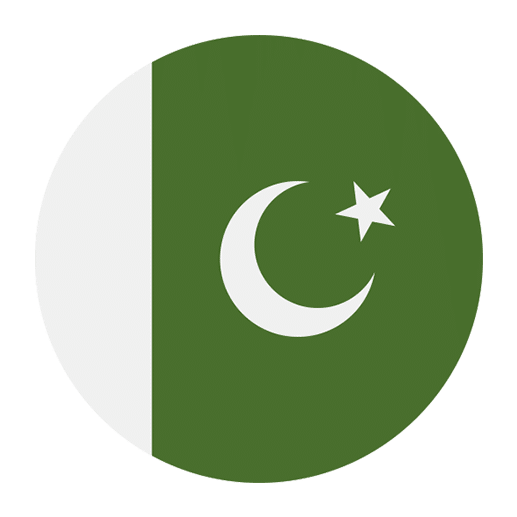The Partition of British India in 1947 was a cataclysmic event that not only reshaped the political boundaries of the subcontinent but also had a profound impact on its cultural and linguistic landscape. Among the numerous languages spoken in the region, Urdu was significantly affected by the partition. This article delves into the impact of the Partition on the Urdu language, examining how the socio-political upheaval influenced its evolution, status, and usage in the newly formed nations of India and Pakistan.
The Historical Context of Urdu
Urdu, a language that evolved over centuries, is a blend of Persian, Arabic, Turkish, and local Indian dialects. It emerged as a distinct language during the Mughal era, particularly flourishing in the courts of Delhi and the Deccan. By the 19th century, Urdu had become the lingua franca of the northern Indian subcontinent and was widely used in literature, poetry, and administration.
Before Partition, Urdu was not just a language but a symbol of cultural unity in a diverse and multilingual region. It was the medium of expression for many renowned poets and writers, such as Mirza Ghalib, Allama Iqbal, and Faiz Ahmed Faiz. The language was intrinsically linked with the cultural and intellectual life of the subcontinent.
Partition and the Birth of Pakistan
The Partition of India led to the creation of two independent dominions, India and Pakistan. Pakistan was conceived as a homeland for Muslims, while India was established as a secular state with a Hindu majority. This division was based on religious lines, and it had a significant impact on the linguistic scenario of both countries.
In Pakistan, Urdu was chosen as the national language despite the fact that only a small percentage of the population spoke it as their first language. The decision was influenced by several factors:
1. **Symbol of Unity**: Urdu was seen as a unifying force that could bridge the linguistic and ethnic diversity of Pakistan, which consisted of provinces like Punjab, Sindh, Balochistan, and the North-West Frontier Province (now Khyber Pakhtunkhwa), each with its own regional languages.
2. **Cultural Heritage**: Urdu was associated with the Muslim identity and cultural heritage, which the leaders of Pakistan wanted to preserve and promote.
3. **Historical Prestige**: Urdu had a rich literary tradition and was already the language of administration and education in many parts of pre-Partition India.
Urdu in Pakistan
The elevation of Urdu to the status of national language in Pakistan had far-reaching consequences. It led to the promotion of Urdu in education, media, and government. However, it also sparked tensions with speakers of regional languages who felt marginalized.
Education and Media
Urdu became the medium of instruction in schools and universities, and it was heavily promoted in print and electronic media. This policy aimed to create a cohesive national identity but faced resistance from speakers of Punjabi, Sindhi, Pashto, and Balochi, who feared the erosion of their own linguistic and cultural identities.
Literature and Arts
Urdu literature and arts flourished in Pakistan. Many writers, poets, and artists who had migrated from India to Pakistan contributed to the enrichment of Urdu. The language continued to be a medium for expressing social, political, and cultural themes, and new genres and styles emerged.
Challenges and Controversies
Despite its official status, Urdu faced challenges in Pakistan. The imposition of Urdu was seen by some as a form of cultural imperialism by the central government, leading to linguistic movements in provinces like Sindh and East Pakistan (now Bangladesh). The latter’s struggle culminated in the secession of East Pakistan and the creation of Bangladesh in 1971, where Bengali was established as the national language.
Urdu in India
In post-Partition India, Urdu’s status underwent significant changes. While it retained its cultural significance, its political and social standing was affected by the new national boundaries and demographic shifts.
Official Status
In India, Hindi was chosen as the official language, with English as an associate official language. Urdu, which had been one of the languages of administration and education in pre-Partition India, lost its official status at the national level. However, it was recognized as one of the 22 scheduled languages of India and was given official status in some states like Jammu and Kashmir, Bihar, Uttar Pradesh, and Telangana.
Socio-Political Context
The Partition led to the migration of a significant number of Urdu speakers from India to Pakistan. Those who remained in India faced challenges in preserving and promoting the language. Urdu became associated with the Muslim minority, and this association sometimes led to its marginalization in a predominantly Hindu society.
Literature and Cinema
Despite these challenges, Urdu continued to thrive in the fields of literature and cinema. The language remained popular in Indian cinema, particularly in Bollywood, where it was used in dialogues, lyrics, and scripts. Many renowned writers and poets, such as Saadat Hasan Manto, Ismat Chughtai, and Kaifi Azmi, continued to produce influential works in Urdu.
The Evolution of Urdu Post-Partition
The Partition had a lasting impact on the evolution of Urdu in both India and Pakistan. While the language faced different challenges in each country, it also adapted and evolved in response to changing socio-political contexts.
Standardization and Dialects
In Pakistan, efforts were made to standardize Urdu and promote it as a national language. This involved the development of standardized textbooks, dictionaries, and grammar guides. However, regional dialects and variations of Urdu continued to exist, reflecting the linguistic diversity of the country.
In India, Urdu retained its regional dialects and variations. The language’s interaction with Hindi and other Indian languages led to the emergence of a hybridized form of speech, particularly in urban areas. This hybridization was evident in Bollywood movies and popular culture, where a mix of Hindi and Urdu, often referred to as Hindustani, became prevalent.
Technological Advancements
The advent of technology and the internet played a significant role in the evolution of Urdu. Digital platforms, social media, and online forums provided new avenues for Urdu speakers to connect, share, and promote the language. Online dictionaries, translation tools, and language learning apps made Urdu more accessible to a global audience.
Global Diaspora
The migration of South Asians to different parts of the world led to the creation of Urdu-speaking communities in countries like the United States, the United Kingdom, Canada, and the Middle East. These diaspora communities played a crucial role in preserving and promoting Urdu through cultural organizations, literary events, and media outlets.
The Future of Urdu
The future of Urdu in both India and Pakistan is shaped by various factors, including government policies, socio-political dynamics, and technological advancements. While the language faces challenges, it also holds immense potential for growth and revitalization.
Government Policies
In Pakistan, government policies aimed at promoting Urdu as the national language continue to play a crucial role. Efforts to promote Urdu in education, media, and administration are ongoing. However, it is essential to strike a balance between promoting Urdu and respecting the linguistic diversity of the country.
In India, the preservation and promotion of Urdu require supportive government policies. Efforts to include Urdu in educational curricula, provide resources for Urdu-medium schools, and support Urdu literature and arts can help revitalize the language.
Community Initiatives
Community initiatives and grassroots efforts are vital for the preservation and promotion of Urdu. Cultural organizations, literary societies, and language advocacy groups play a crucial role in organizing events, workshops, and campaigns to raise awareness about the importance of Urdu.
Technological Integration
The integration of technology in language learning and promotion is a promising avenue for the future of Urdu. Digital platforms, language learning apps, and online resources can make Urdu more accessible to learners worldwide. Social media and content creation platforms provide opportunities for Urdu speakers to share their language and culture with a global audience.
Intergenerational Transmission
The transmission of Urdu from one generation to the next is essential for its survival. Encouraging parents to speak Urdu with their children, promoting Urdu literature and media for young audiences, and creating engaging educational materials can help ensure that the language continues to thrive.
Conclusion
The Partition of 1947 had a profound impact on the Urdu language, shaping its evolution, status, and usage in both India and Pakistan. While Urdu faced challenges in the aftermath of Partition, it also demonstrated resilience and adaptability. The language continues to hold cultural and historical significance in the subcontinent and beyond.
In Pakistan, Urdu’s role as the national language has both united and divided communities, reflecting the complex linguistic landscape of the country. In India, Urdu’s association with the Muslim minority has posed challenges, but the language’s rich literary and cultural heritage remains influential.
The future of Urdu depends on a combination of supportive government policies, community initiatives, technological integration, and intergenerational transmission. By embracing these strategies, Urdu can continue to thrive as a vibrant and dynamic language, preserving its legacy and adapting to the changing times.

